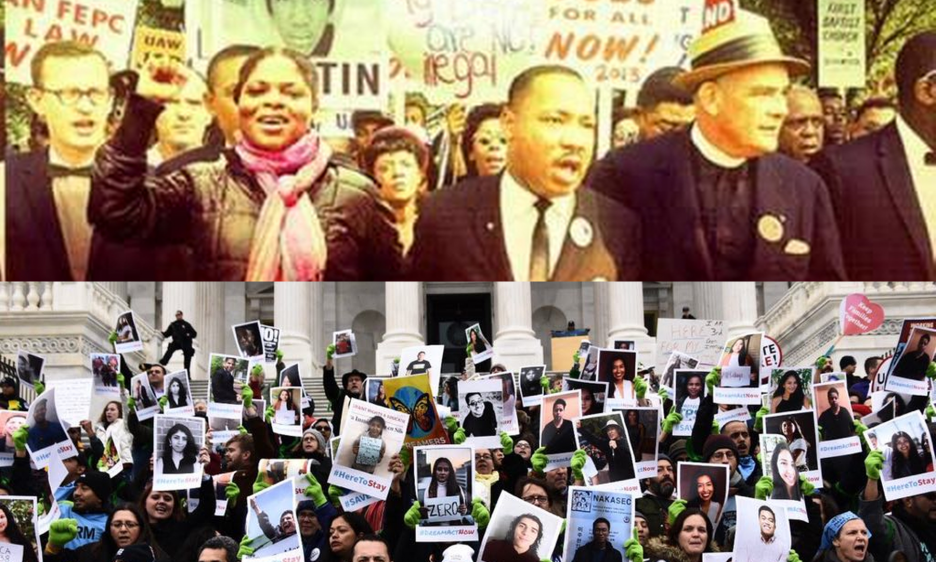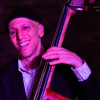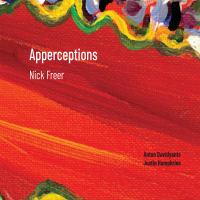Home » Jazz Articles » Interview » David Ambrosio's Civil Disobedience: 50 Years in the Making
David Ambrosio's Civil Disobedience: 50 Years in the Making

The thing that connects it to the path is that it’s based in swing. It’s based on that driving thing that we love the feel of.
—David Ambrosio
Post-bop jazz, much like we might have heard in the turbulent 1960's, came of age when jazz, when America, was in a caustic state of change. The civil rights, anti-war, women's rights and environmental justice movements of the time influenced all forms of American music in that era. Remarkably, much of the protest music from the late sixties on the BlueNote label was released in the decades after the fact, hidden in obscurity when the message was sorely needed in the here and now of America in 1968. But some of it was released at the time, coming from such iconic artists as Bobby Hutcherson, James Spaulding, Jackie McLean, Harold Land and others.
Brooklyn-based bassist David Ambrosio was born in 1968. His personal growth as a musician has carried him down many paths in the music, both as a performer and educator. While he worked often as a sideman on the scene in New York and beyond, as of early 2018, the year he turned fifty, he was yet to perform at a notable New York club as a leader. Then one of his ensemble students planted a seed and his tenure as a leader began.
That student, according to Ambrosio, was guitarist and longtime New York Times jazz reviewer, Peter Watrous. He recommended a series of releases to Ambrosio from the BlueNote archives that were recorded between 1967 and 1969, rooted in protest and reflective of the socio-political movements of that era. Ambrosio was intrigued and began transcribing tunes with the idea of putting a band together to perform these almost forgotten treasures. None of the tracks he transcribed from Hutcherson, Spaulding or McLean had charts available anywhere. Nobody was playing this music, and most had not heard it. It presented the possibility of putting a band together with "fresh standards" to expose the public to. Ambrosio had a connection at the now shuttered Jazz Standard in Manhattan, if he could put together a suitable band. But could he find notable musicians to play these seemingly obscure tunes?
"Jazz musicians are always looking for new things to play. When I've presented the music to anyone that's done the gig over the years, they say things like, 'Wow, this is great music, how do I not know about this?' I would answer, 'Well, here's why you don't know it. No one really does unless you're some kind of archivist, or a musical archaeologist.' It's old music, but it's fresh," says Ambrosio.
In December of 2018, Ambrosio opened at Jazz Standard leading a band to play a dozen tunes he had transcribed. The packed house was gifted a band featuring the great Victor Lewis on drums, saxophonist Donny McCaslin, trumpeter Duane Eubanks, pianist Bruce Barth and Ambrosio on bass. Before the project could achieve total lift off, the pandemic hit and things in general came to a grinding halt.
Ambrosio begins 2024 touring with the current iteration of this band now dubbed, Civil Disobedience. He secured a grant to cover half of the tour and set about extending it to the west coast. Trumpeter Brandon Lee and pianist David Kikoski are on this tour, with Lee adding some compositional value to the band. Lee, unlike much of his generation, writes tunes that swing, that drive and grind and create space to move. His focus is in alignment with Ambrosio's vision and is connected with the music the band is performing.
"What I love about this stuff is that it has those modern elements, but it's still so connected with that tradition, with that swing," remarks Ambrosio, "The thing that connects it to the path is that it's based in swing. It's based on that driving thing that we love the feel of."
In essence, this project was conceived and convened by musicians in response to the socio-economic and social events of our time in America and abroad. In performing this music from BlueNotes' 1960's era, the hope is to relay the messages woven into the music and connect them with the relevant issues of 2024. The band carries with it the awareness of the responsibility of musicians to have a voice during turbulent times in the 1960's or for that matter, the 2020's.
"With improvising musicians, there's a real deep connection to that. It's about the connection of people, what connects us, that common foundation that connects us all. It's part of the message. To bring music that has that message written into it," cites Ambrosio.
Tour performances are typified by the stop in Seattle, just the third date in the brand new digs occupied by the non-profit Seattle Jazz Fellowship. The fellowship features mostly local musicians, with occasional touring bands stopping in. The environment is a dedicated jazz listening room, putting the music and the musicians front and center. All ten performances of the tour will reveal music and a message that for even the most ardent of jazz fans, has remained in stasis for half a century. As one, the musicians and the audience will in a way, open a jazz time capsule and experience, rather than just examine, the contents.
Tags
Interview
David Ambrosio
Paul Rauch
United States
Washington
Seattle
Bobby Hutcherson
James Spaulding
Jackie McLean
Harold Land
Peter Watrous
Victor Lewis
Donny Mc Caslin
Duane Eubanks
Bruce Barth
Civil Disobedience
Brandon Lee
David Kikoski
PREVIOUS / NEXT
Support All About Jazz
 All About Jazz has been a pillar of jazz since 1995, championing it as an art form and, more importantly, supporting the musicians who make it. Our enduring commitment has made "AAJ" one of the most culturally important websites of its kind, read by hundreds of thousands of fans, musicians and industry figures every month.
All About Jazz has been a pillar of jazz since 1995, championing it as an art form and, more importantly, supporting the musicians who make it. Our enduring commitment has made "AAJ" one of the most culturally important websites of its kind, read by hundreds of thousands of fans, musicians and industry figures every month.



























